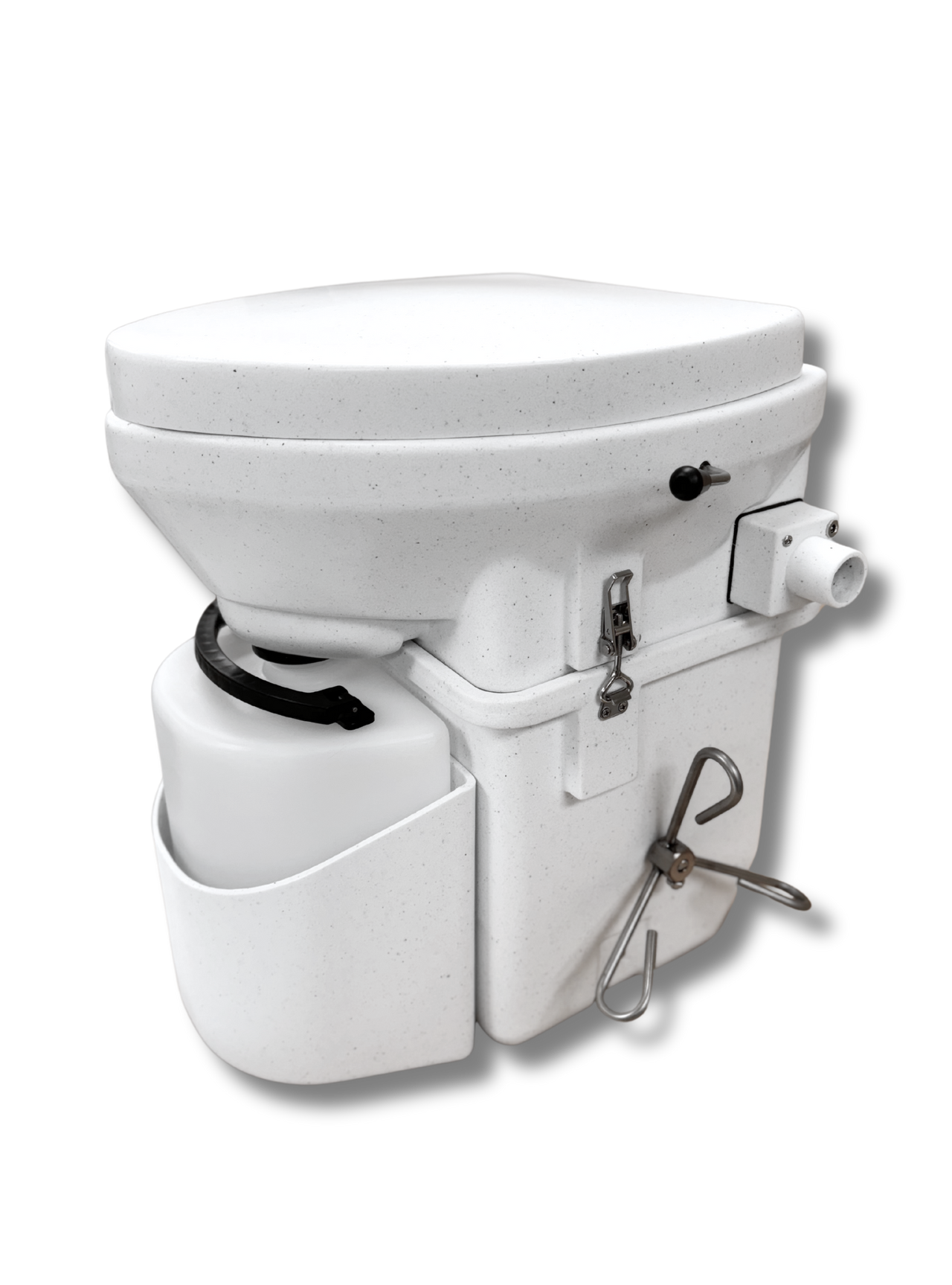Tiny home toilets come in many forms, each with strengths and trade-offs. Here's a breakdown of the most common categories in 2026:
Composting Toilets: The most popular choice for tiny homes, composting toilets separate liquids from solids to reduce odor and speed up breakdown. They require venting and occasional emptying, but offer independence from plumbing and water systems. Good brands include Nature's Head and Separett.
Macerating Toilets: These feel most like a traditional household toilet. A motor grinds waste and pumps it into a holding tank. They require 12V or AC power and plumbing, but deliver comfort and familiarity. Jabsco is a common choice for compact macerators.
Incinerating Toilets: Waste is burned to sterile ash using electricity or propane. Ideal for cold climates where composting slows down. They require more energy and cost more upfront, but produce minimal waste to manage. For off-grid setups, you'll need a robust generator system or substantial solar power capacity to operate these units effectively.
Dry-Flush Toilets: These bag-based systems seal waste in odor-proof cartridges after each use. They're tidy, low-maintenance, and battery-powered, making them great for mobile setups. The main drawback is the recurring cost of cartridges.
Cassette Toilets (RV Style): These are compact flush toilets with a removable waste tank. You empty the cassette at dump stations. Affordable and widely available, but they use chemicals and need frequent servicing.
Traditional Low-Flow Toilets: If you have full plumbing, a low-flow residential toilet can work in a tiny home. They're reliable and familiar, but limit your placement options and water independence. These work best in tiny homes with comprehensive water systems and permanent connections to utilities. For climate control in these setups, consider efficient air conditioning options that work with your bathroom ventilation.







